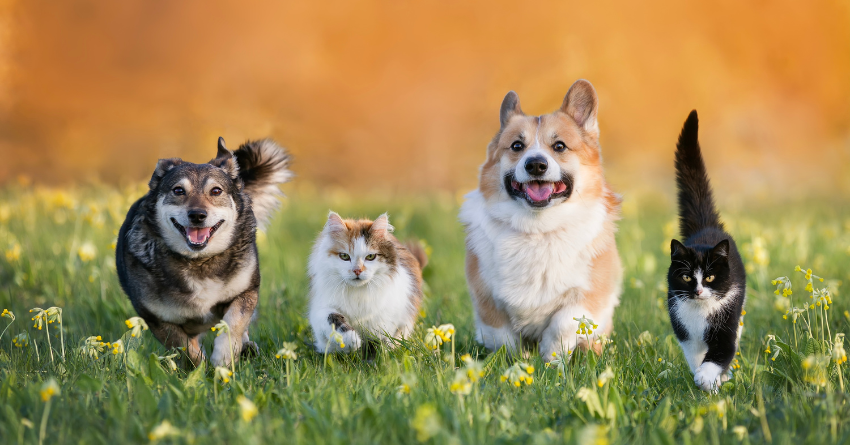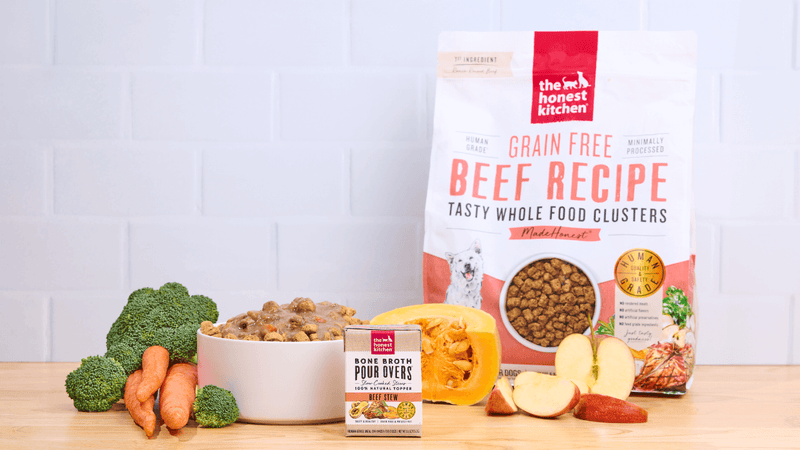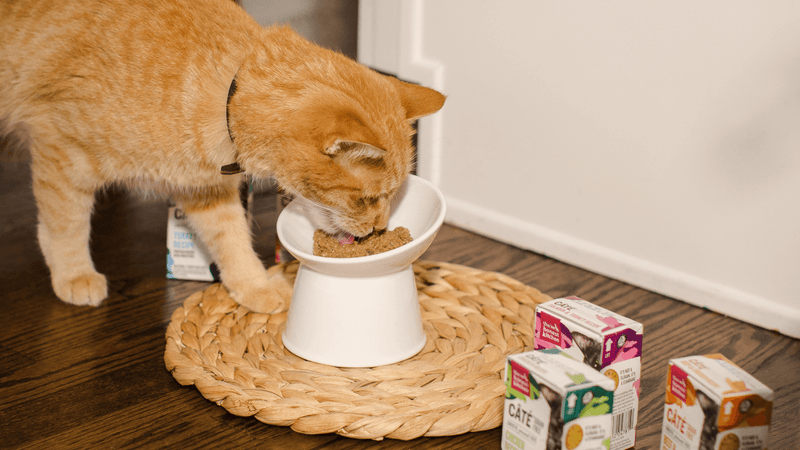How Long Is Fresh or Raw Pet Food Safe to Eat?

The number of people choosing to feed their dogs and cats fresh or raw diets has grown in recent years. While this has led to a lot of questions about food safety, one particular concern that pet parents have is how long fresh or raw pet food is safe to eat.
In this article, we’ll cover different types of fresh and raw pet food, how to tell if the food has gone bad, and factors that may impact shelf life, “best if used by/before” dates, and expiration dates.
Types of Pet Foods That Could Be Fresh or Raw
Freeze-Dried
Freeze-dried pet foods are a great option for pet owners who want to get the benefits of a raw food diet but strive for convenience.
The freeze-drying process removes moisture from the food, which helps to preserve nutrients. The result is a lightweight, shelf-stable product that’s easy to store at room temperature, stays fresh for a long time, and is simple to feed.
Dehydrated
Dehydrated pet food has had all its moisture removed using prolonged low heat to retain the vital nutrients. Before feeding it to your pet, you’ll need to rehydrate the food with water or broth. This type of food is shelf stable and has a much longer shelf life than raw food.
Check out The Honest Kitchen for a range of high-quality, dehydrated pet foods that offer many of the same benefits pet owners seek in fresh or raw foods!
Store-Bought
Store-bought pet foods from reputable, trustworthy brands like The Honest Kitchen can provide pets with human grade, balanced nutrition that requires minimal preparation. While The Honest Kitchen doesn’t sell fresh or raw pet food items, we offer a variety of delicious, healthy, and nutritionally complete wet dog foods that pets love.
It’s important to purchase from a trusted brand, though, to ensure your pet’s safety, especially when feeding fresh or raw pet food. While the manufacturers typically screen these products for foodborne illnesses, such as salmonella and E. coli, there’s still a risk.
Homemade
While the idea of preparing fresh or raw meals at home for your pet may sound like a good idea, it’s not always the best choice. Fresh isn’t always better or healthier for pets. In fact, homemade pet food can be dangerous for both you and your pet and often misses the mark when it comes to ensuring a balanced diet.
Even if you’re purchasing the best quality fresh meat from the grocery store, it’s not screened for contaminants and parasites like ingredients for regulated pet food are. Plus, dogs don’t usually have the best table manners and may take food — in this case, raw meat — to other spots in the house, spreading contamination.
Signs That Fresh or Raw Pet Food Has Gone Bad
Now that you know what types of dog food are considered fresh or raw, let’s look at some signs that the food may have gone bad and shouldn’t be served to your pet.
Unpleasant smell: A rancid or foul odor is a strong sign the food has spoiled. Trust your nose on this one — if it smells off, it probably is.
Moisture inside the packaging: If you see moisture inside the food packaging when you first open it, that can be a sign the food is starting to spoil.
Mold growth: Mold can be harmful if ingested, so if you see any mold, toss the whole package as it’s likely full of invisible but dangerous mold spores.
Discoloration: Fresh pet food should maintain its natural color, so any unusual discoloration can indicate it’s no longer safe to eat.
Slimy appearance: A slimy film is a sign of bacterial growth, which can be dangerous for cats and dogs.
Pet refusal: Cats and dogs have a keen sense of smell, so if they are refusing to eat it, trust them.
Damaged packaging: Regardless of the expiration date, use-by date, or sell-by date, if the packaging of fresh pet food is damaged, it could mean air and contaminants have had a chance to enter the package, leading to spoilage.
Just like when people get food poisoning, feeding your cat or dog expired or bad food can lead to some serious side effects, including severe vomiting and diarrhea. Salmonella poisoning is also a concern, and other safety risks are possible depending on the food’s ingredients.
If you think your pet has eaten expired, spoiled, or contaminated food, call your veterinarian right away.
Factors That Impact the Shelf Life and Expiration Dates of Fresh or Raw Pet Food
Ingredients
Preparation Methods
Packaging
Storage Conditions
Tips To Practice Pet Food Safety and Avoid Illness
Maintaining the safety of fresh and raw food is vital for your pet’s health. We’ve covered some factors that cause food to spoil faster, so now let’s look at best practices for storing and handling your pet’s meals at home or when traveling to maintain food quality.
Keep foods at the right temperature: To ensure food safety, always refrigerate fresh and raw pet foods at 40°F or lower to slow down bacteria growth.
Use vacuum sealing: Vacuum sealing and airtight containers can significantly extend the shelf life of food, as many harmful bacteria need oxygen to survive and multiply.
Avoid humidity and light exposure: Store food in a dry, cool, dark place. A hot, humid, bright environment will cause it to spoil faster.
Refer to the pet food company: When in doubt, check the company’s recommendations. Each brand may have specific storage instructions online or on the food label you can follow for optimal food safety.
Check packaging: Before serving your dog or cat their meal, inspect the package for signs of tampering or damage.
-
Label and safety date: Always check the food expiration date, but keep in mind that it applies to unopened food. Once opened, you have about:
Six weeks to use dry food
5–7 days to finish canned foods
30 days to feed freeze-dried food
3–5 days to use up raw food
Practice good hygiene: Finally, ensure your hands, utensils, and food prep areas are clean before handling raw or fresh pet food, then clean up again after your pet eats. This can help prevent cross-contamination.
Rest Assured With The Honest Kitchen’s Fresh Food Products
Choosing the right quality food is crucial to your furry friend’s health, and ensuring the safety of that food is just as critical. However, there are potential risks when it comes to raw or homemade pet foods, so we recommend using a vet-approved wet or dehydrated option from a reputable brand like The Honest Kitchen.
The Honest Kitchen’s dog and cat foods are made with high-quality whole food ingredients that are gently dehydrated for optimal nutrient retention and regularly tested for contaminants. Plus, they’re human grade and nutritionally balanced with all of the vitamins and minerals your pet needs to thrive!
Explore The Honest Kitchen's full collection today for a safer and more convenient way to feed fresh.





